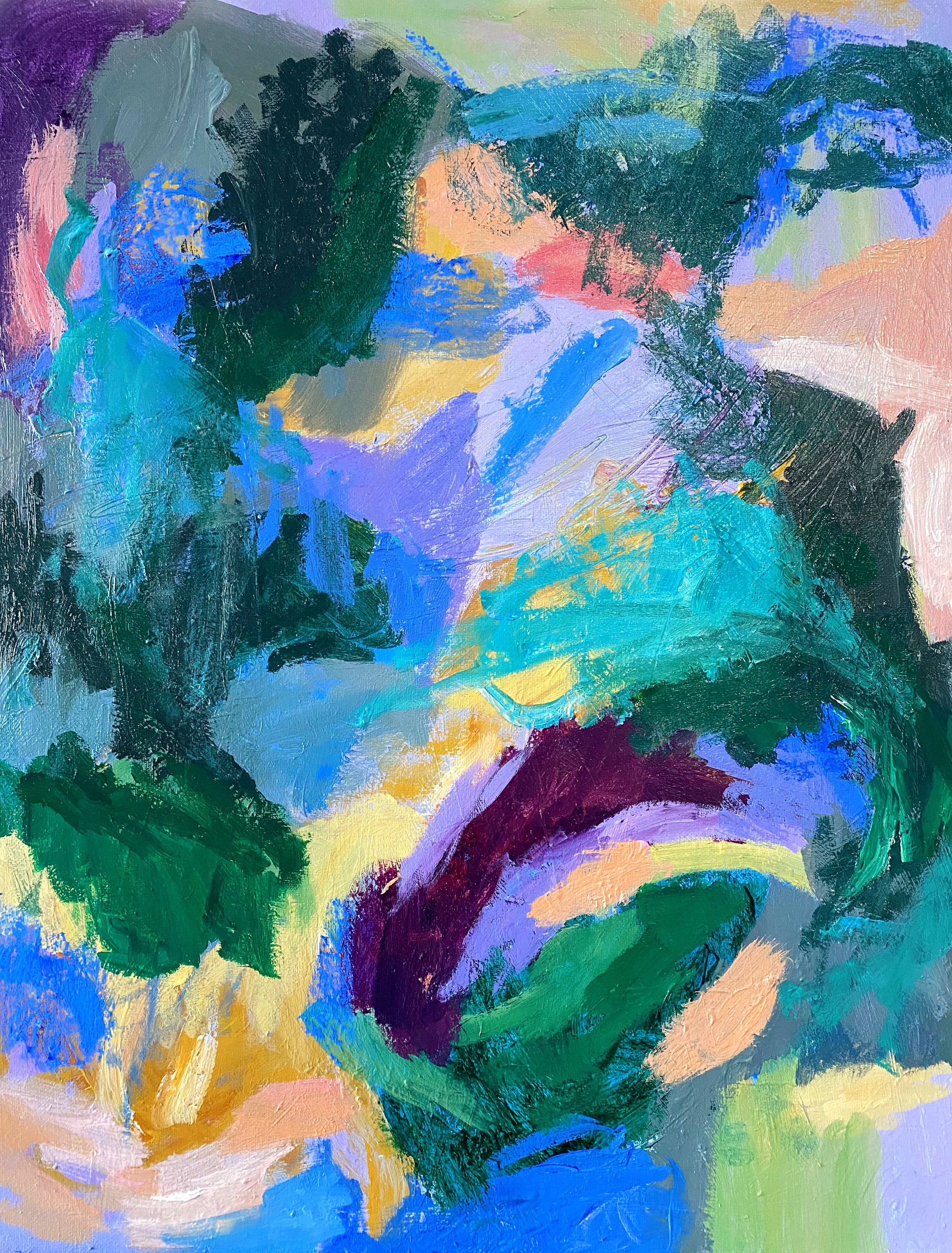abstract play
I’m so glad the days are longer now—it means more time in the day for good lighting = more time to paint! I was able to make it to the art studio yesterday after my day job and worked on an abstract painting. I have always loved abstract work—painting and observing it. I’m not sure how many people realize this, but abstract painting is quite rigorous. I think it does come more naturally to some folks, but it takes a lot of thought in my experience: which colors to use? What should the composition be? etc. When you’re painting something based in the observable world, oftentimes, possible compositions and color combinations are already evident.
new abstract painting in the works…
contemplating calling this “northern skies,” but that is very TBD!
work in progress, acrylic and pastels on canvas
As much as possible, I like to have a launching-off point when it comes to composition and/or color. Some artists are able to paint purely from their imagination, but I find it’s often helpful to have a reference photo whether it’s to create an outline of the composition or to get clarity on what colors I want to use. In the painting above that I’m working on, my color choices so far have been loosely inspired by a Pierre Bonnard painting. I can find endless inspiration from my favorite artists such as Bonnard and Richard Diebenkorn.
In the following painting, I was inspired by these cream-colored flowers and the surrounding leaves of various shades and hues of green to yellow to brown:
Photo I took in Berkeley, CA, in December 2021.
Remaining Light, acrylic on canvas
Abstract Urban Scenes
Another process I love for abstract inspiration—especially for composition—is using photos of urban scenes I’ve taken. City-scapes are great for playing with shapes and space. I took this photo of San Francisco’s Chinatown many moons ago. See below for the resulting painting, “Lunar New Year.”
Lunar New Year, acrylic on canvas
In my experience, color tends to come a bit easier to me than composition, but I have found the “Rule of Thirds” in photography to be extremely helpful when formulating a composition for my paintings. As you may already know, the Rule of Thirds says that, for an image to be visually appealing, it should be divided into three parts (rather than two or four, for example). When subjects in a painting or photo are separated by only two halves, it looks static and flat.
If you enjoyed learning more about my abstract painting process, definitely follow me on the social media accounts below and sign up for my email newsletter, where I share more about my creative process! Thanks so much for being here!





